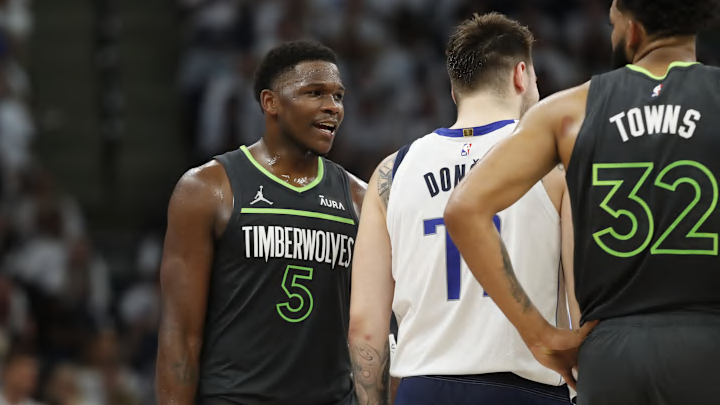All things considered, the Minnesota Timberwolves' 2023-24 campaign should be considered a success. The fact that they earned their way to the conference finals automatically means they advanced further than 26 other teams in the league.
But on top of that, they outdid their preseason expectations and took down the defending champions, ultimately coming just three wins away from their first ever NBA Finals appearance. This was their breakout year, and fans around the league can expect the Wolves to be a threat to make a deep playoff run for years to come.
With all that said, there had to be some element of letdown inside the Timberwolves' locker room after their Game 5 loss to Dallas. What felt like possibly their biggest roadblock in Denver was out of the way, and the Mavericks did not feel like as high-level an opponent. Blowing their chance at a Finals appearance and a championship was a big missed opportunity.
It is fairly plain to see that the loss simply came down to matchup difficulty. The Mavs were more well-equipped to consistently stifle the Timberwolves' offense and prevent them from doing what they are so good at. Perhaps Minnesota's biggest shortcoming against Dallas is being brought to the forefront now, with the Celtics doing what they could not: draw the Mavericks' bigs away from the basket.
Boston's offense has done a good job pulling Gafford and Lively away from the hoop in Games 1 and 2. pic.twitter.com/WXWwFu27M7
— Todd Whitehead (@CrumpledJumper) June 12, 2024
Minnesota allowed Dallas' bigs to operate too close to the rim
The difference in data from the Timberwolves' five-game series with the Mavs compared against the results from the first two games of the Finals are jarring in terms of defenders' distance from the rim. In Minnesota's five games against Dallas, Dereck Lively and Daniel Gafford were an average of 8.7 and 7.6 feet away from the hoop respectively at the moment a Wolves player attempted a shot.
In the first two games of the Finals, Lively and Gafford have been an average of 13 and 12 feet away respectively when Boston attempts a shot. This is a massive difference, and it shows how the Timberwolves struggled to take away the Mavericks' rebounding strengths. Partly as a result of letting Dallas operate close to the basket, Minnesota finished the Western Conference Finals with a -13 rebounding margin over those five games.
These numbers are probably not all that surprising to those who watched the series. The Wolves gave up plenty of lob dunks to Lively, Gafford and others all throughout those five games, despite having plenty of size on the interior. It is far from surprising that giving your opponent more chances to rebound and make shots close to the rim will eventually lead to them gaining an advantage, regardless of how much size you have to throw at them.
Watching the Mavs' bigs get drawn away from the hoop by shooters like Kristaps Porzingis, Al Horford and the Celtics' other big men has to feel eye-opening for the Timberwolves. Perhaps if this was something they had been able to correct three weeks ago, Minnesota would still be playing right now. But the best thing Chris Finch and his coaching staff can do at this point is store this away in the mental bank and be ready to implement it when necessary.
